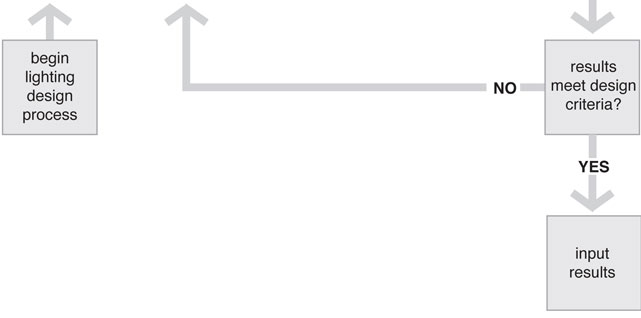learn
According to Millet, "by observing how light behaves, we can work with it to reveal architecture” [1]. She suggests that for all light sources, the luminous effect depends upon the following factors: the source, the geometry, the surfaces that receive and modify light, and the observer who views. The Interior Lighting Design Process flowchart below defines the overall framework for the learning modules. The different stages in this learning module touch upon Millet’s factors to help “reveal” the architectural features of the interior space through interior lighting design.
The first stage in the Lighting Design process is the identification of the design criteria. For example, when designing lighting for a classroom, what is the desirable quality and quantity of light? What are the lighting design and energy codes that one must follow in a particular geographical region for a given type of interior space? The fourth stage involves the design of the lighting distribution system. Here, the lighting distribution techniques such as indirect, direct, semi-indirect, semi-direct, etc. are established, based on the desired function and aesthetics in the interior space. This stage leads to the selection and positioning of luminaires with appropriate luminance distribution pattern. The above stages of the lighting design process result in photometric and photorealistic output in the fifth stage. These are evaluated to check if the quantitative and qualitative results meet the desired lighting design criteria. Iterations are performed to meet the preferred lighting scenario by going through stages three to five again. |
Click on the different stages of the Lighting Design Process in the menu above to take you to the (a) lighting concepts module covering fundamental knowledge on lighting; (b) software concepts module on the related lighting design software knowledge; and (c) lighting application module which demonstrates the application of knowledge from the other modules for specific lighting tasks; under each stage of the process.
References
Copyright 2017. All rights reserved. All images are taken by the author unless noted.







